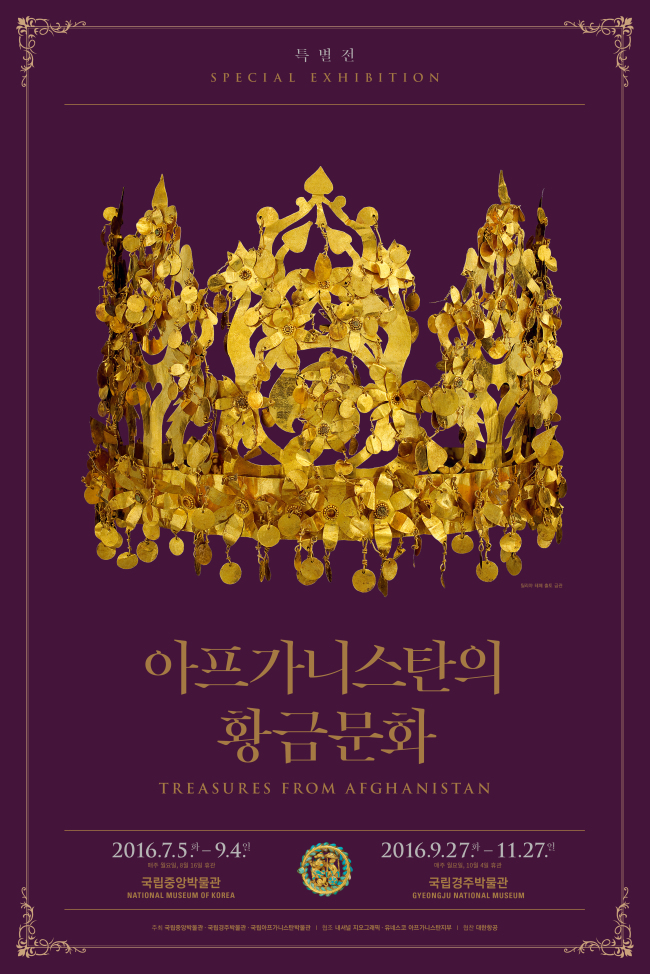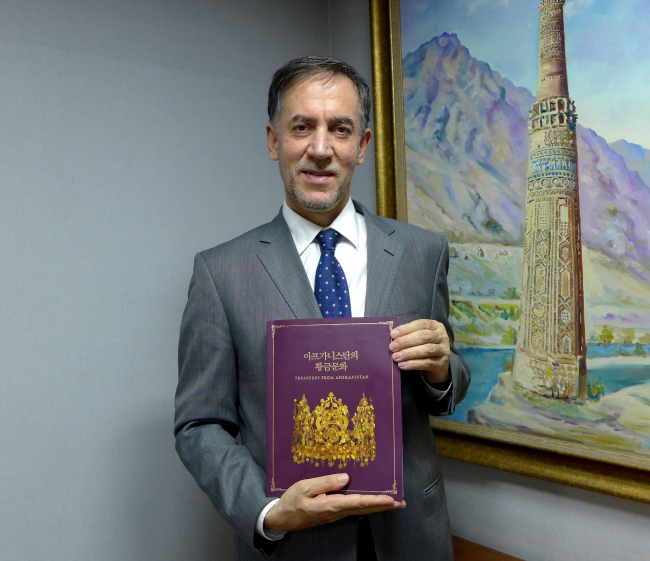 |
Exhibition titled “Treasures from Afghanistan” at the National Museum of Korea in Seoul has introduced the country’s ancient relics in Korea for the first time. (National Museum of Korea in Seoul) |
Timeworn relics from Afghanistan have been unveiled in Korea for the first time, through joint collaboration between the two countries’ national museums.
Displaying artefacts of ancient civilizations between the 20th century B.C. and the seventh century, the exhibition titled “Treasures from Afghanistan” ran at the National Museum of Korea in Seoul from July 5 to Sept. 4, and will continue at the Gyeongju National Museum from Sept. 27 to Nov. 27.
According to the National Museum of Korea Director General Yi Young-hoon, ancient Afghanistan was a crucible of cultures encompassing pre-modern Iran, Central Asia, India and China. It offers clues to neighboring regions’ identities, including Korea’s, he added.
“Afghanistan has preserved its long history and heritage through the National Museum of History in Kabul,” Afghan Ambassador to Korea Mohammad Saleem Sayeb told The Korea Herald in an interview last week.
“The main purpose of this exhibition is to open the door for the exchange of experience and knowledge between our two countries, stimulate collaboration among archaeological experts and scholars, and spark interest in our culture from the Korean public.”
Noting that Afghanistan has been a corridor connecting different civilizations for centuries, the envoy said the exhibit showcased objects from the ancient Greek, Kushan, South Asian and Middle Eastern civilizations. The landlocked county straddling Central and South Asia was at the center of the ancient Silk Road.
 |
Afghan Ambassador to Korea Mohammad Saleem Sayeb poses with a book published on the occasion of exhibition titled “Treasures from Afghanistan,” which has introduced the country’s ancient relics in Korea for the first time. (Joel / The Korea Herald) |
From the 1930s to the late 1970s, when the Soviet Union invaded Afghanistan, extensive excavation took place through the combined efforts of Afghan government officials and French and Russian archaeologists.
Digging was done across sites in Tillya Tepe, Tapa Fullol, Ay Khanoum and Bagram and it unearthed exquisite handcrafts such as golden crowns, glassware, bronzeware, lacquerware and plaster products.
Of significance to Korea, Sayeb highlighted, the golden crown discovered in Tillya Tepe in northern Afghanistan drew much attention from Korean scholars, as it bore great similarities with the ancient Korean Silla Dynasty’s golden crown. More than 20,000 artifacts have been uncovered in a groundbreaking discovery at a site with seven graves.
“Due to war and security problems, excavation was put on hold following the Soviet invasion,” the diplomat noted, adding that work had resumed following the toppling of the Taliban terrorist group by the US-led allied forces.
Regarding the Taliban’s destruction of ancient monuments across the country -- most notably the dynamite bombardment of the Buddhas of Bamiyan statue in central Afghanistan, a fourth and fifth century sculpture carved into a cliff, representing classical and blended Gandharan art -- the envoy called it a “horrible crime,” adding the government had begun rehabilitating it.
Sayeb also touched on reform efforts by President Ashraf Ghani’s unity government.
“Despite our immense challenges from security and other issues, we have made considerable progress in bringing about change in our government and economy,” he argued. “Our main objective is to bring peace to our country. There are currently more than 8,800 American troops in Afghanistan who are training our armed forces and equipping them with weapons and gears.”
On joint international projects, he pointed to the Turkmenistan–Afghanistan–Pakistan–India Pipeline developed by the Asian Development Bank, which will transport Caspian Sea’s natural gas through these countries. Construction began in Turkmenistan on Dec. 13 last year, and the pipeline is expected to be operational by 2019.
Sayeb also mentioned the Salma Dam project, also known as the Afghanistan-India Friendship Dam, a hydroelectric and irrigation project on the Hari River in western Afghanistan, which produces 42 megawatts of power and provides water to 75,000 hectares of farmland annually.
By Joel Lee (
joel@heraldcorp.com)









![[Today’s K-pop] Blackpink’s Jennie, Lisa invited to Coachella as solo acts](http://res.heraldm.com/phpwas/restmb_idxmake.php?idx=644&simg=/content/image/2024/11/21/20241121050099_0.jpg)